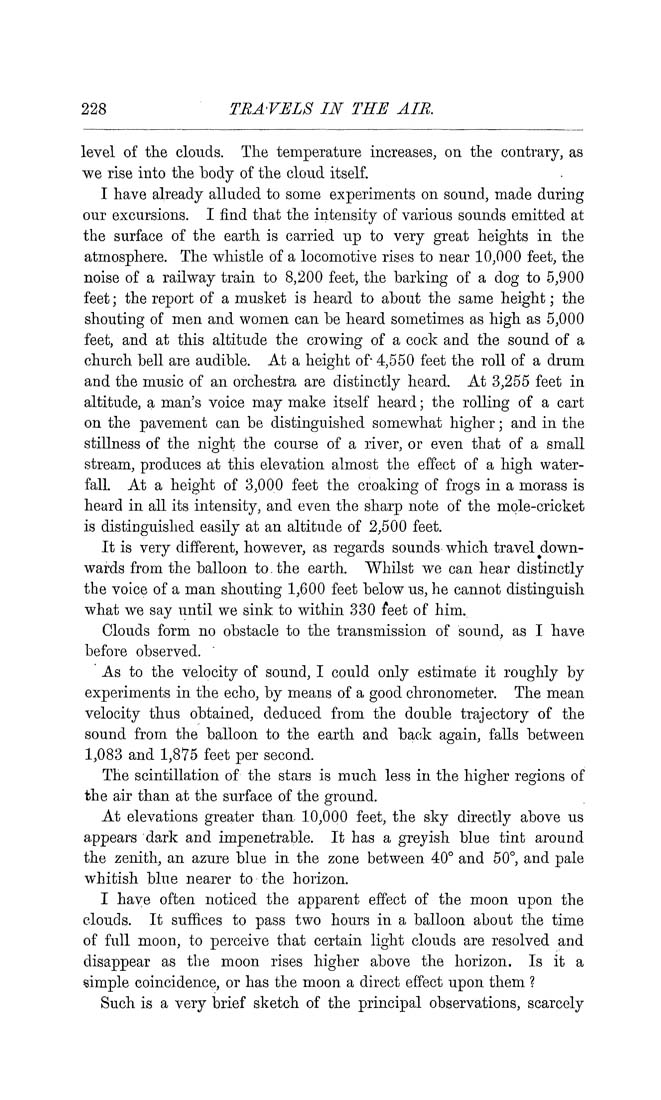228 TRAVELS IN THE AIR.
level of the clouds. The temperature increases, on the contrary, as
we rise into the body of the cloud itself.
I have already alluded to some experiments on sound, made during
our excursions. I find that the intensity of various sounds emitted at
the surface of the earth is carried up to very great heights in the
atmosphere. The whistle of a locomotive rises to near 10,000 feet, the
noise of a railway train to 8,200 feet, the barking of a dog to 5,900
feet; the report of a musket is heard to about the same height; the
shouting of men and women can be heard sometimes as high as 5,000
feet, and at this altitude the crowing of a cock and the sound of a
church bell are audible. At a height of- 4,550 feet the roll of a drum
and the music of an orchestra are distinctly heard. At 3,255 feet in
altitude, a man's voice may make itself heard; the rolling of a cart
on the pavement can be distinguished somewhat higher; and in the
stillness of the night the course of a river, or even that of a small
stream, produces at this elevation almost the effect of a high water¬
fall. At a height of 3,000 feet the croaking of frogs in a morass is
heard in all its intensity, and even the sharp note of the mole-cricket
is distinguished easily at an altitude of 2,500 feet.
It is very different, however, as regards sounds which travel down¬
wards from the balloon to. the earth. Whilst we can hear distinctly
the voice of a man shouting 1,600 feet below us, he cannot distinguish
what we say until we sink to within 330 feet of him.
Clouds form no obstacle to the transmission of sound, as I have
before observed.
As to the velocity of sound, I could only estimate it roughly by
experiments in the echo, by means of a good chronometer. The mean
velocity thus obtained, deduced from the double trajectory of the
sound from the balloon to the earth and back again, falls between
1,083 and 1,875 feet per second.
The scintillation of the stars is much less in the higher regions of
the air than at the surface of the ground.
At elevations greater than 10,000 feet, the sky directly above us
appears dark and impenetrable. It has a greyish blue tint around
the zenith, an azure blue in the zone between 40° and 50°, and pale
whitish blue nearer to the horizon.
I have often noticed the apparent efi'ect of the moon upon the
clouds. It suffices to pass two hours in a balloon about the time
of full moon, to perceive that certain light clouds are resolved and
disappear as the moon rises higher above the horizon. Is it a
simple coincidence, or has the moon a direct effect upon them ?
Such is a very brief sketch of the principal observations, scarcely
|








